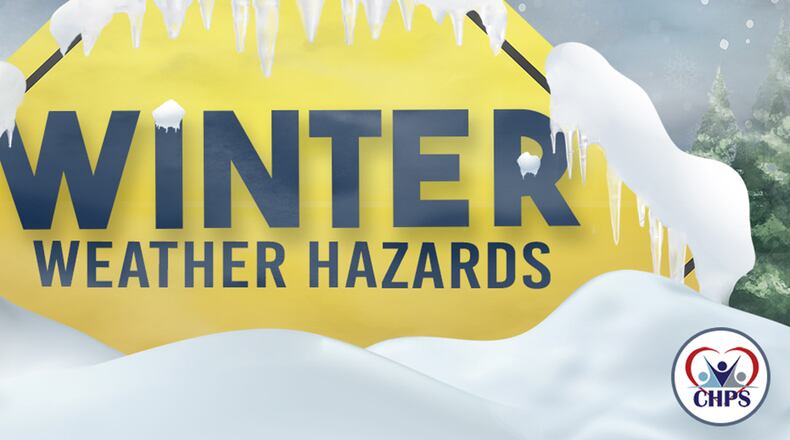Cold weather can be dangerous for anyone who spends time outdoors for either work or fun. Dress warmly and stay dry with layers of loose-fitting clothing. The outer layer of clothing helps protect you from wind, snow and rain. It should be water- and wind-resistant to reduce loss of body heat.
An insulation layer will help you retain heat by trapping air close to your body. Natural fibers like wool, goose down or fleece work best. The inner layer of clothing should be a fabric that will hold body heat and doesn’t absorb moisture.
Wool, silk or polypropylene will hold more body heat than cotton. You should also wear a hat that covers the ears, scarf or knit mask to cover face and mouth, and mittens for the hands.
Footwear should be boots that are waterproof and insulated to keep feet warm and dry with heavily textured soles that can grip surfaces.
Weather hazard: Shoveling snow
Cold weather acts as a vasoconstrictor, which means it narrows blood vessels. This puts extra strain on the heart. Before tackling strenuous tasks in cold temperatures, consider your physical condition, the weather factors and the nature of the task.
If you have heart disease or high blood pressure, follow your doctor’s advice about shoveling snow or performing other hard work in the cold.
Otherwise, if you have to do heavy outdoor chores, warm-up your body and do a few stretching exercises before you go out. This will reduce your risk of muscle injury.
Dress warmly, work slowly, and lift small amounts when shoveling.
Weather hazard: Driving in ice and snow
Of injuries related to snow and ice, about 70% occur in automobiles. If you must go out during a winter storm, be sure your headlights, taillights and windows are clean so you can see and be seen. Do not travel in low visibility conditions.
Avoid traveling on ice-covered roads, bridges, and overpasses, if at all possible. Drive carefully and defensively.
Don’t try to save time by traveling faster than road and weather conditions permit. Always travel with a charged cell phone.
Prepare your car for winter travel. Have your car systems serviced: check the battery, antifreeze, wipers, windshield washer fluid, heater, defroster and brakes. Replace worn tires and check tire air pressure.
Create an emergency supply kit for your car. Include a windshield scraper and small broom, a small sack of sand for generating traction under wheels, collapsible shovel and jumper cables. Keep gas tank full to avoid ice in tank and fuel lines.
Winter weather warnings, watches and advisories
Winter weather-related warnings, watches and advisories are issued by your local National Weather Service office. Here is what the winter weather alerts mean:
· Winter storm warning – Issued when hazardous winter weather in the form of heavy snow, heavy freezing rain or heavy sleet is imminent or occurring. Winter storm warnings are usually issued 12 to 24 hours before the event is expected to begin.
· Winter storm watch – Alerts the public to the possibility of a blizzard, heavy snow, heavy freezing rain or heavy sleet. Winter storm watches are usually issued 12 to 48 hours before the beginning of a winter storm.
· Winter weather advisory – Issued for accumulations of snow, freezing rain, freezing drizzle and sleet that will cause significant inconveniences and, if caution is not exercised, could lead to life-threating situations.
· Wind chill temperature – How cold people feel when outside. As wind increases, heat is carried away from your body at a faster rate, driving down your body temperature and making you feel much colder. The wind chill is not the actual temperature but rather how the wind and cold feel on exposed skin.
For more information on how to protect yourself from winter weather, visit
USAFwellness.com or contact your local Civilian Health Promotion Services team. Comprehensive information on cold weather safety can be found on the Ready.gov website.
About the Author
